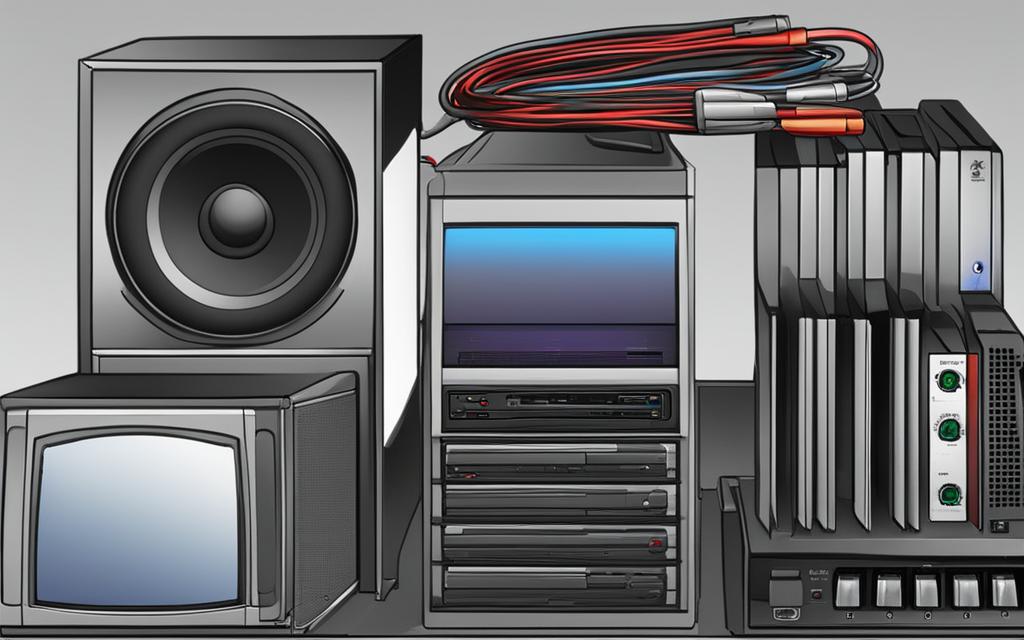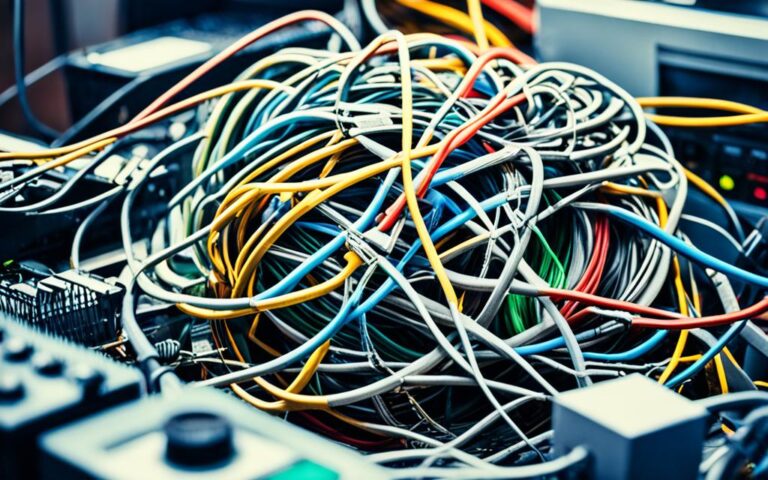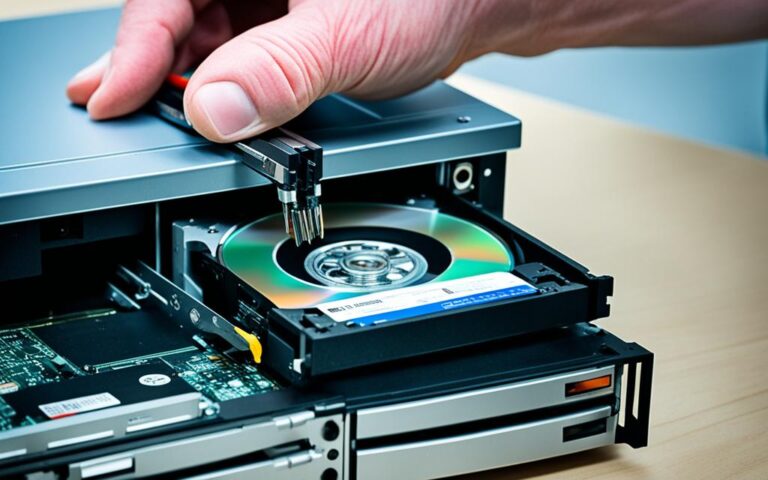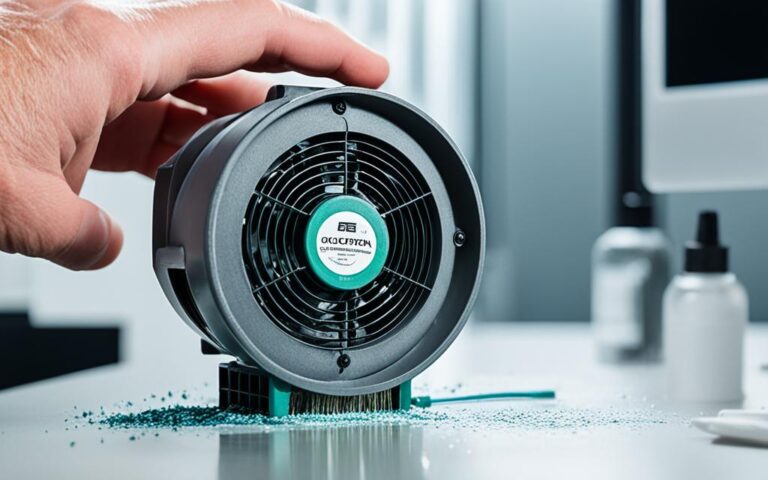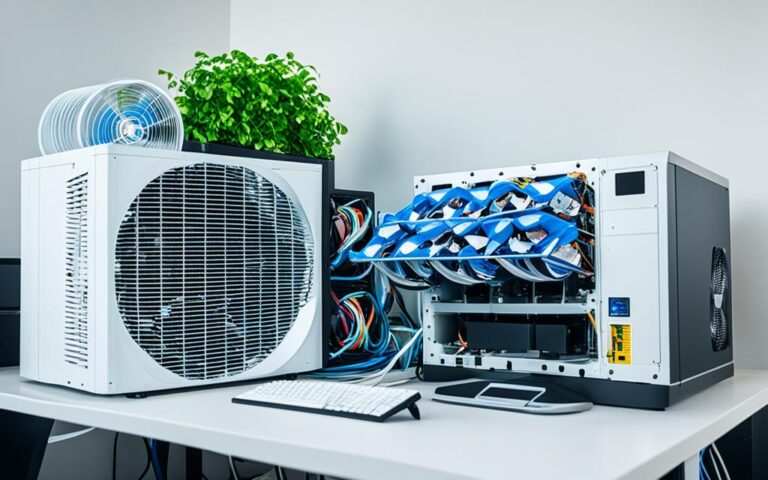Resolving Desktop Audio Output Issues
If you’re experiencing sudden audio issues on your desktop computer, there are several steps you can take to resolve the problem. These steps include rebooting your computer, checking the volume settings, uninstalling and reinstalling the program, and ensuring the correct audio output device is selected. Additionally, you can try using different speakers or headphones, disabling audio enhancements, and updating or reinstalling audio drivers. By following these troubleshooting steps, you can fix audio output issues on your desktop and enjoy crystal-clear sound playback.
Check Volume Settings and Program Configuration
When it comes to resolving audio output issues on your desktop, one of the first steps you should take is checking the volume settings. It may seem obvious, but sometimes the volume is turned down or muted, causing you to believe there’s an actual problem with the audio. Therefore, make sure to check the volume settings on both your computer and the specific program you’re using.
In certain browsers like Chrome and Firefox, each tab can be muted individually. So, even if your computer volume is at the correct level, a muted tab could be the culprit behind the lack of audio. Take a moment to check if any tabs are muted and unmute them if necessary.
If the volume settings are correct and you still can’t hear anything, it’s worth checking the program’s volume in the Volume mixer. The Volume mixer allows you to adjust the volume settings for individual programs on your computer. To access it, right-click on the speaker icon in the taskbar and select “Open Volume mixer” or “Volume mixer.” From there, ensure that the program you’re using is properly configured and adjust the volume as needed.
If you’ve checked the volume settings and the problem persists, another step you can take is uninstalling and reinstalling the program. This can help resolve any potential program-related audio configuration issues. However, before you proceed with uninstalling, it’s crucial to back up any important data associated with the program and take note of your current settings. This way, you can easily restore everything once the program is reinstalled.
“Checking volume settings and program configuration is a crucial step in troubleshooting audio output issues on your desktop.”
Program Volume Troubleshooting Checklist:
- Check the volume settings on your computer and ensure they are not turned down or muted.
- Verify that individual tabs in browsers like Chrome and Firefox are not muted.
- Adjust the program volume in the Volume mixer and ensure it is configured correctly.
- If the issue persists, uninstall and reinstall the program, remembering to back up any important data and note your current settings.
By following these steps, you can effectively troubleshoot volume settings and program configuration issues that might be causing audio output problems on your desktop.
Image:
Verify Audio Output Device
Windows sometimes changes the audio output device without your knowledge, leading to audio output issues. To check and verify the audio output device on your desktop, click on the speaker icon in the taskbar and select the appropriate device from the list.
You can also access the Sound settings in Windows 10 or Sound settings in Windows 11 to ensure that the correct device is selected under the Playback tab.
If the audio output device is incorrect, switch to the proper device and test the sound again.
Sound Settings in Windows 10:
- Right-click on the speaker icon in the taskbar and select “Open Sound settings”.
- In the Sound settings window, scroll down to the “Output” section and click on the dropdown menu under “Choose your output device”.
- Select the desired audio output device from the list.
- Close the Sound settings window and test the sound again.
Sound Settings in Windows 11:
- Right-click on the speaker icon in the taskbar and select “Open Sound settings”.
- In the Sound settings window, click on the “Output” tab.
- Under the “Choose your output device” section, select the correct audio output device from the dropdown menu.
- Close the Sound settings window and test the sound again.
If you are unsure which audio output device to select, consult the manufacturer’s documentation or check the device name on the physical device or its packaging. Selecting the correct audio output device is crucial for ensuring clear and crisp sound playback on your desktop.
| Common Audio Output Devices | Description |
|---|---|
| Headphones | Personal listening devices that are worn over the ears or placed inside the ear canal. |
| Speakers | External hardware devices that reproduce sound by converting electrical signals into audible sound waves. |
| Soundbar | A long, narrow speaker system designed to enhance audio performance for televisions or computers. |
| Monitor Speakers | Integrated speakers built into computer monitors that provide audio output. |
Check Physical Connections and Device Compatibility
Physical connections are often the culprit behind audio output issues on your desktop. To ensure proper audio playback, follow these steps:
1. Secure Audio Cables
Check that all audio cables are securely plugged into both your computer and the audio device. Loose or improperly connected cables can disrupt the audio signal, leading to sound issues.
2. Pair Wireless Audio Devices
If you are using wireless audio devices, such as headphones, make sure they are properly paired with your computer. Follow the manufacturer’s instructions to establish a stable wireless connection.
3. Inspect for Cable Damage
Inspect your audio cables for any signs of damage or fraying. Damaged cables can cause intermittent audio output or no sound at all. If any cables are damaged, replace them with new ones.
4. Test with Different Audio Devices
In some cases, using different audio devices, such as USB speakers or headphones, can help pinpoint the issue. Connect alternative audio devices to your desktop and check if the audio output works properly. This test can help determine if the problem lies with the initial set of speakers.
5. Ensure Device Compatibility
Verify that the audio device you are using is compatible with your desktop system. Check the manufacturer’s specifications and system requirements to confirm compatibility. Using incompatible devices can result in sound compatibility issues.
| Issue | Possible Cause | Solution |
|---|---|---|
| No sound | Loose audio cables | Securely plug in audio cables |
| Intermittent audio | Fractured or damaged cables | Replace damaged audio cables |
| Poor sound quality | Incompatible audio device | Ensure device compatibility with your desktop system |
By checking physical connections and verifying device compatibility, you can resolve audio output issues on your desktop and enjoy uninterrupted sound playback.
Update or Reinstall Audio Drivers
Outdated or corrupted audio drivers can cause audio output problems on your desktop. To fix this, follow the steps below:
- Open the Device Manager by right-clicking on the Windows Start button and selecting Device Manager from the menu.
- Navigate to the Sound, video, and game controllers section in the Device Manager.
- Locate the audio controller for the malfunctioning device.
- Right-click on the audio controller and select Delete. This will remove the driver from your system.
- Reboot your computer to allow Windows to automatically reinstall the driver.
If Windows fails to reinstall the driver, you have a couple of options:
- Visit the website of your PC maker or the audio card manufacturer to download the latest driver for your device. Make sure to download the driver that is compatible with your operating system.
- Use a driver updater tool to automatically update your audio drivers. These tools scan your system, identify outdated drivers, and download and install the appropriate updates.
By updating or reinstalling your audio drivers, you can ensure that they are functioning properly and resolve any audio output issues on your desktop.
Common Issues with Audio Drivers
“I recently updated my operating system, and now my speakers are not working. What should I do?”
If you are experiencing audio issues after updating your operating system, it is possible that the new version is not compatible with your current drivers. In this case, updating or reinstalling the audio drivers can often solve the problem.
Disable Audio Enhancements
If you’re experiencing subpar sound quality or mediocre audio on your desktop, it might be due to audio enhancements. Disabling these enhancements can help improve your listening experience. Follow the steps below to disable audio enhancements on Windows 10 and Windows 11.
Disabling Audio Enhancements on Windows 10
- Open the Settings menu by clicking on the Start button and selecting the gear icon.
- In the Settings window, click on the “System” option.
- Go to the “Sound” tab.
- Under the “Related Settings” section, click on “Device properties”.
- In the “Device properties” window, click on “Additional device properties”.
- A new window will open. Select the “Enhancements” tab.
- Here, you have the option to disable individual enhancements or disable all enhancements at once.
- Once you’ve made your desired changes, click “Apply” and then “OK” to save the settings.
Disabling Audio Enhancements on Windows 11
- Open the Settings menu by clicking on the Start button and selecting the gear icon.
- In the Settings window, click on the “System” option.
- Go to the “Sound” tab.
- Scroll down to the “Advanced sound options” section and click on “Audio enhancements”.
- In the “Audio enhancements” section, toggle the switch to disable audio enhancements.
By disabling audio enhancements on your desktop, you can eliminate any unwanted effects or modifications that might be affecting your sound quality. Experiment with disabling enhancements to find the setting that provides the best audio experience for you.
Conclusion
To enjoy crystal-clear sound playback on your desktop computer, resolving audio output issues is crucial. By following the troubleshooting steps outlined in this article, you can effectively troubleshoot and resolve common audio issues, ensuring a seamless audio experience.
Start by checking your volume settings and program configuration. Ensure that the volume is not turned down or muted both on your computer and in the specific program you are using. If the issue persists, verify the audio output device in your Windows settings to ensure the correct device is selected.
Next, check the physical connections and device compatibility. Make sure all audio cables are securely plugged into your computer and audio device. If you are using wireless audio devices, ensure they are properly paired. Additionally, consider using different audio devices to determine if the issue lies with the initial set of speakers or headphones.
If the problem still persists, update or reinstall your audio drivers. Outdated or corrupted drivers can often cause audio output issues. Open the Device Manager, delete the malfunctioning audio driver, and let Windows automatically reinstall it. Alternatively, download the latest driver from your PC maker’s website or the audio card manufacturer’s website.
Lastly, disabling audio enhancements can help improve the sound quality on your desktop. Some audio devices come with enhancements that may affect the audio output. Adjust your sound settings and disable these enhancements as needed.
By following these troubleshooting steps, you can effectively troubleshoot and resolve audio output issues on your desktop, ensuring an optimal audio experience.
